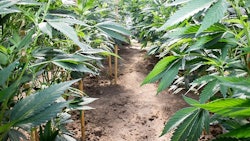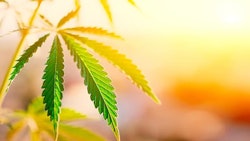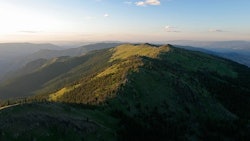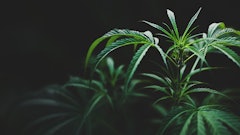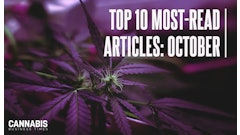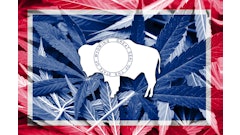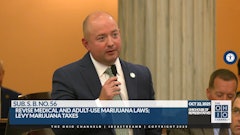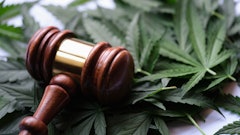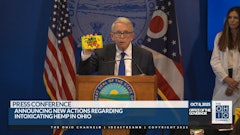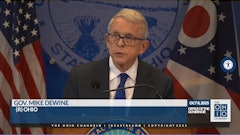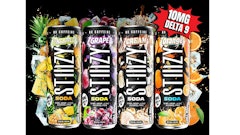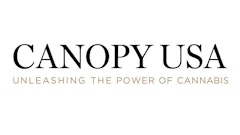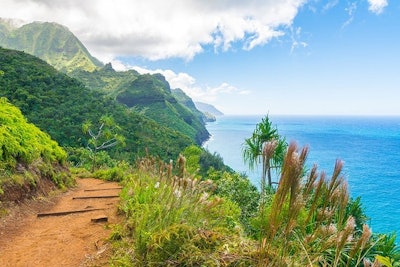
By Nov. 1, Hawaii’s hemp farmers will need to apply for a USDA license. After two recent attempts to enact a law governing hemp production in the state, the legislature kicked oversight and licensing to the USDA earlier this year.
With fall harvest upon the state’s farmers, there’s also a bit of pressure to apply for a new USDA license in time to plant seeds in the spring. (The application can be viewed and downloaded here.) And while it’s not a total overhaul of everything Hawaiian hemp farmers have been doing to comply with the research program, per se, the sudden switch says a lot about how the state has approached the budding hemp industry over the past few years.
Ray Maki runs Permaculture Kaua'i Nursery and Farm on Kaua’i, the northernmost island of the state. He also serves as president of the Hawaii Hemp Farmers Association. With his three or four acres of sativa varieties, Maki has been growing for his own in-house CBD extraction; until the USDA program kicks in, he and the other four dozen farmers in Hawaii are unable to transport hemp off their property.
As of October 2020, Hawaii’s Department of Agriculture reported nearly 50 licensed hemp growers cultivating a total of 440 acres. It’s a small but earnest foundation for a Hawaiian hemp industry that’s seen fits and starts.
In 2019, Gov. David Ige vetoed an industrial hemp bill that would have regulated the state industry and allowed growers to participate a more functional supply chain—including the sale of hemp biomass to processors, who in turn could sell packaged products to retail customers.
“It was really frustrating from a farmer’s perspective,” Maki says.
The central issue, according to the governor’s office, was the regulation of THC within the hemp market. Ige wrote that the bill, S.B. 1353, could set up a law enforcement clash between THC-rich cannabis and industrial hemp.
“Although I support the growth and development of Hawai‘i’s hemp industry, the increased THC concentration in new marijuana strains is a concern for our communities,” Ige wrote at the time of his veto. “We cannot allow unregulated growth cycles of hemp if it could result in unsupervised growth of marijuana.
“I want to assure you that the veto of this measure will not delay Hawai‘i’s industrial hemp program. All states are patiently awaiting USDA’s implementation of its final rule for the Hemp Protection Program. Upon release, HDOA will work with the legislature to mesh the federal rules with our local legislation to ensure that we have a program that meets federal requirements and provides proper oversight of the industry.”
A follow-up bill materialized in the state in 2020, but the coronavirus pandemic and its attendant economic pressures pushed the matter back far enough that, eventually, the state picked up the USDA program. Now, Hawaii joins states like New Hampshire and Mississippi in passing the oversight torch to the federal government.
And while the sudden shift to the USDA program is a bit jolting, Maki says Hawaii already has several strikes against its upstart hemp farmers: certain environmental factors and the obstinance of the state legislature.
"What I've learned, and it’s been steep learning curve here for the last few years, is that Hawaii is at a major disadvantage to other states in growing hemp at any kind of scale,” Maki says. “Our biggest problem is our day length.”
Daylight hours range from a high of 13.5 hours around the summer solstice to 11 hours in mid-December, a much more restrictive range than states like Colorado where the range is closer to 5.5 hours. The shorter daylight hours tend to trigger the hemp plants’ flowering phase—often earlier than intended. Maki says many Hawaiian hemp growers (and medical cannabis growers) must work around this by investing in greenhouse lights, rather than simply relying on the sun.
Another problem that Maki cites is the UVB radiation from the equatorial sunlight is intense enough to spur more rapid THC development—the subject of ongoing study in the lighting research community. He also says that the intense sunlight generates rich terpene profiles, part of the Hawaiian-grown brand that might be one of the state’s strengths in the national marketplace. For hemp growers under strict cannabinoid regulation, it’s a difficult give-and-take.
Other Hawaii-specific issues include:
- the constant high humidity (around 80-85%) that cuts into potential post-harvest storage time;
- the relatively high winds that knocked down many of Maki’s hemp plants earlier this summer, something with which all farmers in the state must contend;
- and the allure of year-round hemp cultivation dampened by increased disease and mold pressures during the winter months, making it tough to grow at scale in the otherwise terrific temperatures of Hawaii.
“I think everybody thought that once [the industry] opened up, producing at any kind of scale would be possible year-round, but I see less and less of a possibility of it, personally,” Maki says. “I know other guys might think differently, but I'm a little bit skeptical about how much it’s worth growing during the winter here.”
During this upcoming winter season, Maki won’t be trying again. He’ll plan to revisit his hemp crop with spring planting under the USDA regime.
“I think that the promise of Hawaii is still to be determined and find out whether we finally have an operating program in the spring of 2021,” Maki says.
Until then, it still remains to be seen how farmers come out of the 2020 season.
In 2019, more than half of all hemp crops grown in Hawaii were hot. Shelley Choy, hemp program coordinator for the state Department of Agriculture, said at the time that the high rate of hot crops was part and parcel of a research pilot program. Whether the more stringent USDA guidelines next year will make a difference is a significant question.
While the U.S. Congress decided to push back the states’ pilot program termination date by one year, Hawaii’s legislature had already abandoned its program in favor of the USDA’s interim final rule.










